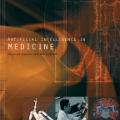Community smells appear in sub-optimal software development community structures, causing unforeseen additional project costs, e.g., lower productivity and more technical debt. Previous studies analyzed and predicted community smells in the granularity of community sub-groups using socio-technical factors. However, refactoring such smells requires the effort of developers individually. To eliminate them, supportive measures for every developer should be constructed according to their motifs and working states. Recent work revealed developers' personalities could influence community smells' variation, and their sentiments could impact productivity. Thus, sentiments could be evaluated to predict community smells' occurrence on them. To this aim, this paper builds a developer-oriented and sentiment-aware community smell prediction model considering 3 smells such as Organizational Silo, Lone Wolf, and Bottleneck. Furthermore, it also predicts if a developer quitted the community after being affected by any smell. The proposed model achieves cross- and within-project prediction F-Measure ranging from 76% to 93%. Research also reveals 6 sentimental features having stronger predictive power compared with activeness metrics. Imperative and indicative expressions, politeness, and several emotions are the most powerful predictors. Finally, we test statistically the mean and distribution of sentimental features. Based on our findings, we suggest developers should communicate in a straightforward and polite way.
翻译:社区气味出现在次级最佳软件开发社区结构中,导致意外的额外项目成本,例如生产率降低和技术债务增加。先前的研究利用社会技术因素分析和预测社区小群体颗粒中的社区气味。然而,这种气味的再演要求开发者单独作出努力。为了消除这种气味,每个开发者应根据自己的气味和工作状态制定支持措施。最近的工作揭示开发者的性格可以影响社区的气味差异,他们的情绪可能会影响生产力。因此,可以对情绪进行评估,以预测社区气味。为此,本文件建立了一个以开发者为导向的、感知的社区气味预测模型,其中考虑到3种气味如组织Silo、Lone Wolf和Bottallneck。此外,它预测每个开发者是否在受到任何气味影响后退出社区。拟议的模型可以实现76 %至93 %的跨项目内预测F-计量。研究还揭示出与积极性指标相比,具有更强烈的预测力的情感特征。为此,本文提出了一种面向发展者、具有指示性和感知觉的预测力的社区气味模型。最后,我们检验了一种最直率的统计和感官的预测。




